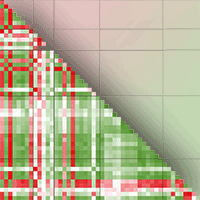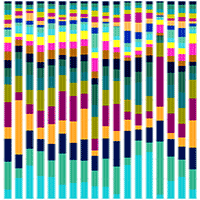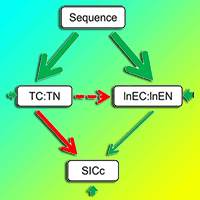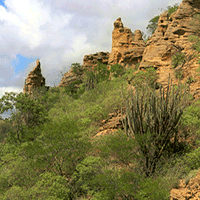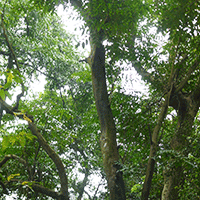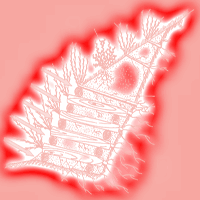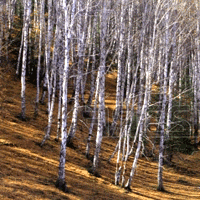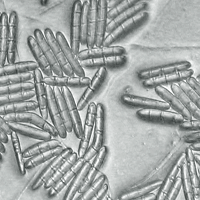
Potential spread of forest soil-borne fungi through earthworm consumption and casting
Lucio Montecchio (1), Linda Scattolin (1) , Andrea Squartini (2), Kevin Richard Butt (3)
iForest - Biogeosciences and Forestry, Volume 8, Issue 3, Pages 295-301 (2015)
doi: https://doi.org/10.3832/ifor1217-008
Published: Aug 26, 2014 - Copyright © 2015 SISEF
Research Articles
Abstract
To test if forest soil-borne fungi concerned with plant health can be selectively dispersed by earthworms, 10 fungal species isolated from 5 forests were presented, at 2 concentrations, to 3 ecologically distinct earthworm species in laboratory trials. Between 5 and 13 days after introduction, casts were collected, where possible, from each earthworm species fed with a different fungus. These casts were analysed, using molecular methods, for the presence of the given fungus and its vitality verified through traditional plating techniques. The research confirmed that earthworms have an important role in dispersal of soil fungi in forests, and that such activity can depend on the taxonomical position of the fungus, ecological category of the earthworm species involved and the fungal concentration. In certain instances there is a suggestion that some fungi may be toxic to some earthworms at the given concentrations, which equated to those within and outside of the rhizosphere.
Keywords
Earthworms, Soil-borne Fungi, Fungal Inoculum, Ecology, Dispersal
Authors’ Info
Authors’ address
Linda Scattolin
TeSAF Department, University of Padova, v.le dell’Università 16, I-35020 Legnaro (PD, Italy)
DAFNAE Department, University of Padova, v.le dell’Università 16, I-35020 Legnaro (PD, Italy)
School of Built and Natural Environment, University of Central Lancashire, Preston PR1 2HE (United Kingdom)
Corresponding author
Paper Info
Citation
Montecchio L, Scattolin L, Squartini A, Butt KR (2015). Potential spread of forest soil-borne fungi through earthworm consumption and casting. iForest 8: 295-301. - doi: 10.3832/ifor1217-008
Academic Editor
Alberto Santini
Paper history
Received: Dec 26, 2013
Accepted: May 24, 2014
First online: Aug 26, 2014
Publication Date: Jun 01, 2015
Publication Time: 3.13 months
Copyright Information
© SISEF - The Italian Society of Silviculture and Forest Ecology 2015
Open Access
This article is distributed under the terms of the Creative Commons Attribution-Non Commercial 4.0 International (https://creativecommons.org/licenses/by-nc/4.0/), which permits unrestricted use, distribution, and reproduction in any medium, provided you give appropriate credit to the original author(s) and the source, provide a link to the Creative Commons license, and indicate if changes were made.
Web Metrics
Breakdown by View Type
Article Usage
Total Article Views: 54951
(from publication date up to now)
Breakdown by View Type
HTML Page Views: 45013
Abstract Page Views: 4011
PDF Downloads: 4402
Citation/Reference Downloads: 57
XML Downloads: 1468
Web Metrics
Days since publication: 4129
Overall contacts: 54951
Avg. contacts per week: 93.16
Citation Metrics
Article Citations
Article citations are based on data periodically collected from the Clarivate Web of Science web site
(last update: Mar 2025)
Total number of cites (since 2015): 8
Average cites per year: 0.73
Publication Metrics
by Dimensions ©
Articles citing this article
List of the papers citing this article based on CrossRef Cited-by.
References
The effects of fungi on food selection by Lumbricus terrestris L. In: “Earthworm Ecology - From Darwin to vermiculture” (Satchell JE ed). Chapman & Hall, London, UK, pp. 365-381.
Gscholar
Factors affecting earthworm abundance in soil. In: “Earthworm Ecology” (Edwards CA ed). St. Lucie Press, Boca Raton, FL, USA, pp. 37-64.
Gscholar
Breakdown of animal, vegetable and industrial organic wastes by earthworms. In: “Earthworms in Waste and Environmental Management” (Edwards CA, Neuhauser EF eds). SPB Academic Publishing, The Hague, The Netherlands, pp. 21-31.
Gscholar
Phytophthora: its biology, taxonomy, ecology, and pathology. The American Phytopathological Society, St. Paul, MN, USA, pp. 364.
Gscholar
The biology of the rhizosphere. In: “Ecology and management of soilborne plant pathogens” (Parker CA, Rovira AD, Moore KJ, Wong PTW, Kollmorgen JF eds). APS Press, St. Paul, MN, USA, pp.75-79.
Gscholar
Effects of artificial acid rain on the microarthropod fauna in decomposing birch leaves. Pedobiologia 22: 409-422.
Gscholar
Fusarium species: an illustrated manual for identification. Pennsylvania State University Press, University Park, PA, USA, pp. 193.
Gscholar
Fungi of northern Europe. 2, Gill Fungi. Penguin Nature Guides, Penguin Books, London, UK, pp. 36.
Gscholar
Hypocreales of the southeastern United States: an identification guide. CBS Biodiversity 4: 1-145.
Gscholar
A mathematical model of vescicular-arbuscular mycorrhizal infection in roots of Trifolium subterraneum. In: “Ecology and management of soilborne plant pathogens” (Parker CA, Rovira AD, Moore KJ, Wong PTW, Kollmorgen JF eds). APS Press, St. Paul, MN, USA, pp.88-91.
Gscholar
Root diseases and soil-borne pathogens. University of California Press, Berkeley, CA, USA, pp. 240.
Gscholar
Role of soil invertebrates in determining the composition of soil microbial communities. In: “Ecological interactions in the soil” (Fitter AHD, Atkinson DJ, Read Usher MB eds). Blackwell Scientific Publications, Oxford, UK, pp. 297-317.
Gscholar
Humus forestali. Centro di Ecologia Alpina Ed., Trento, Italy, pp. 320.
Gscholar


